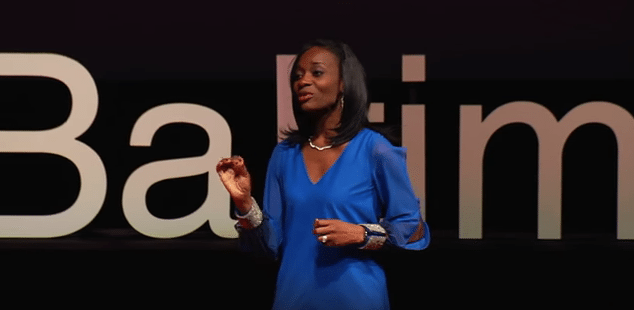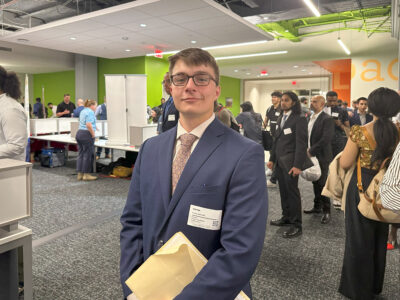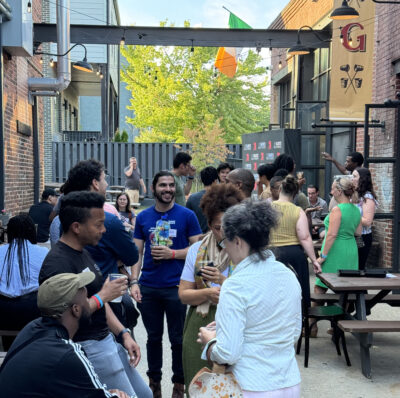To change batteries, scientists and engineers at UMBC’s Bioelectronics Laboratory are looking within.
For the very first time, the battery is included, and that battery is you, said Assistant Professor of Computer Science and Electrical Engineering Gymama Slaughter.
At TEDxBaltimore, Slaughter detailed new development of sensors that can be powered by the body:
“The basic consistency of the battery has not changed in over 100 years,” she said. “And one of our biggest limitations when it comes to our need to be mobile is that batteries are large, heavy and can only be fashioned into a very few restrictive shapes.” Of course, they also need to replaced.
Batteries and the human body share a key common component in that both have lots of stored chemical energy. In fact, with its requirements to constantly power cells, Slaughter said, the body contains a lot more chemical energy than a battery.
“The human body has an infinite source of power,” Slaughter said.
Harnessing that power for electricity is the focus of the Bioelectronics Laboratory’s work. Teams of chemistry and electronics specialists are starting with diabetes.
Glucose monitoring is a key element of diabetes treatment. The blood sugar also produces chemical energy that powers cells. The team is working on using that energy for a glucose monitor.
“We’re using the electrical-chemical breakdown of glucose to measure blood sugar levels, and generate electricity simultaneously to power our devices,” Slaughter said.
The device in development would be implanted a few millimeters underneath the skin, and contain microelectronic circuits.
Blood sugar levels are monitored continuously, and the data can transmit to a smartphone or other device for reading. The continuous monitoring would allow doctors to change up patterns of care depending on what the readings are saying. Whoa.
We’ve reported on Singularity’s efforts to create a renewable battery, and the use of smartphones for diabetes care at WellDoc, but this is the first effort that combines the two.
Slaughter’s was one of 18 talks from TEDxBaltimore that are now online, credited to OpenRangeVideo. Check them out here.
Before you go...
Please consider supporting Technical.ly to keep our independent journalism strong. Unlike most business-focused media outlets, we don’t have a paywall. Instead, we count on your personal and organizational support.
3 ways to support our work:- Contribute to the Journalism Fund. Charitable giving ensures our information remains free and accessible for residents to discover workforce programs and entrepreneurship pathways. This includes philanthropic grants and individual tax-deductible donations from readers like you.
- Use our Preferred Partners. Our directory of vetted providers offers high-quality recommendations for services our readers need, and each referral supports our journalism.
- Use our services. If you need entrepreneurs and tech leaders to buy your services, are seeking technologists to hire or want more professionals to know about your ecosystem, Technical.ly has the biggest and most engaged audience in the mid-Atlantic. We help companies tell their stories and answer big questions to meet and serve our community.
Join our growing Slack community
Join 5,000 tech professionals and entrepreneurs in our community Slack today!






